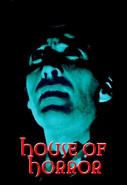|
American Jack
Stevenson emigrated to Denmark in 1993 and soon began to explore
local subject matter, resulting in a number of books on Danish
cinema alongside his other research interests in exploitation
cinema. This first book in FAB Press' exciting new Cinema Classics
Collection brings together both interests nicely.
The range itself is
a great idea. Small books at a budget price which offer studies of
historically important movies, genres and directors. Easily
digestible, their size is reminiscent of the BFI's Film Classics
range, and ideally suited to introductory studies of directors,
movements or individual films.
Witchcraft
Through the Ages promises a study of the highly acclaimed and
controversial 1920s Danish documentary/horror Häxan, made by
Benjamin Christensen, and banned for many years in its complete form
across the world. The book's author Jack Stevenson, points out on
several occasions that there exists only one previous study of
Christensen's work and that book is in Danish. As such Stevenson
essentially argues for a full-length English-language study of the
Danish director, and it might well be Stevenson who provides that
tome. The Cinema Classics Collection tome however can be viewed as
merely an introduction. Disappointingly the book really only deals
with Häxan as a film text in only the vaguest terms. The tome
lacks the substance of a full-length textual analysis, its
background details are informed but sketchy, and the context of
later revivals is somewhat brushed over.
The press release
which accompanied my copy of the book asks the following questions:
"Was Häxan the first and most perverse exploitation film, replete
with Satanic debauchery, or the original classic of documentary
cinema? Who was this mysterious man, Benjamin Christensen, and what
really drove him to create this extraordinary epic?" It seems then
appropriate to evaluate the text in response to these questions.
What Stevenson does
do, is to provide us with an informed biographical background to the
Danish director. The context of his private life, his earlier works
and thematic interests are explored, but to me there seemed to be an
abrupt forcing of Häxan into the evaluation. Stevenson seems to
suggest that the occult was a preoccupation for the film's director,
but its an issue that is never satisfactorily pursued. In addition
Stevenson at times assumes too much of his readership and omits to
investigate his categorisation of the film as documentary - making
mention of Flaherty's influential Nanook of the North but without
articulating the paradoxes involved with a documentary that was to
all intents and purposes staged. Häxan was similarly operating under
the banner of documentary but is a fictional piece of work, albeit
one that uses non-actors (like for example the Italian neo-realist
movement).
Stevenson's book is
a tempting text, and at a reasonable price, but I fear that it
attempts too much, and misses out on an opportunity to fully explore Häxan
itself. It will be interesting to see how FAB's new series develops
and I hope Stevenson himself takes the opportunity to develop his
research and interests into a much longer piece (possibly even for
FAB!).
©RJE
Simpson 2006
|


